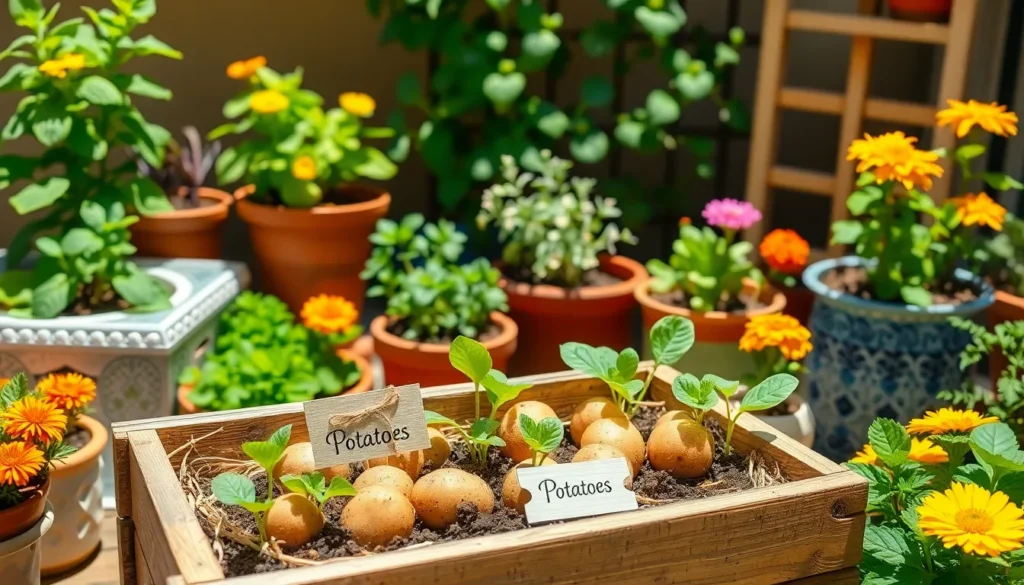Potatoes are the unsung heroes of the vegetable world, offering a bounty of culinary possibilities from crispy fries to creamy mashed delights. Yet, many gardeners, whether just starting their green journey or seasoned with years of experience, shy away from growing these versatile tubers due to space constraints. Fear not, for even the smallest of spaces can become abundant potato fields with a little ingenuity and care.
In this article, we’ll delve into the delightful world of small-space potato gardening, transforming balconies, patios, and even windowsills into productive plots. You’ll learn how to select the right varieties, make the most of your limited area, and understand the nuances of container gardening to maximize your harvest. With practical tips and a bit of creativity, growing your own potatoes will not only be possible but also immensely rewarding, no matter the size of your garden.
Select Compact Potato Varieties
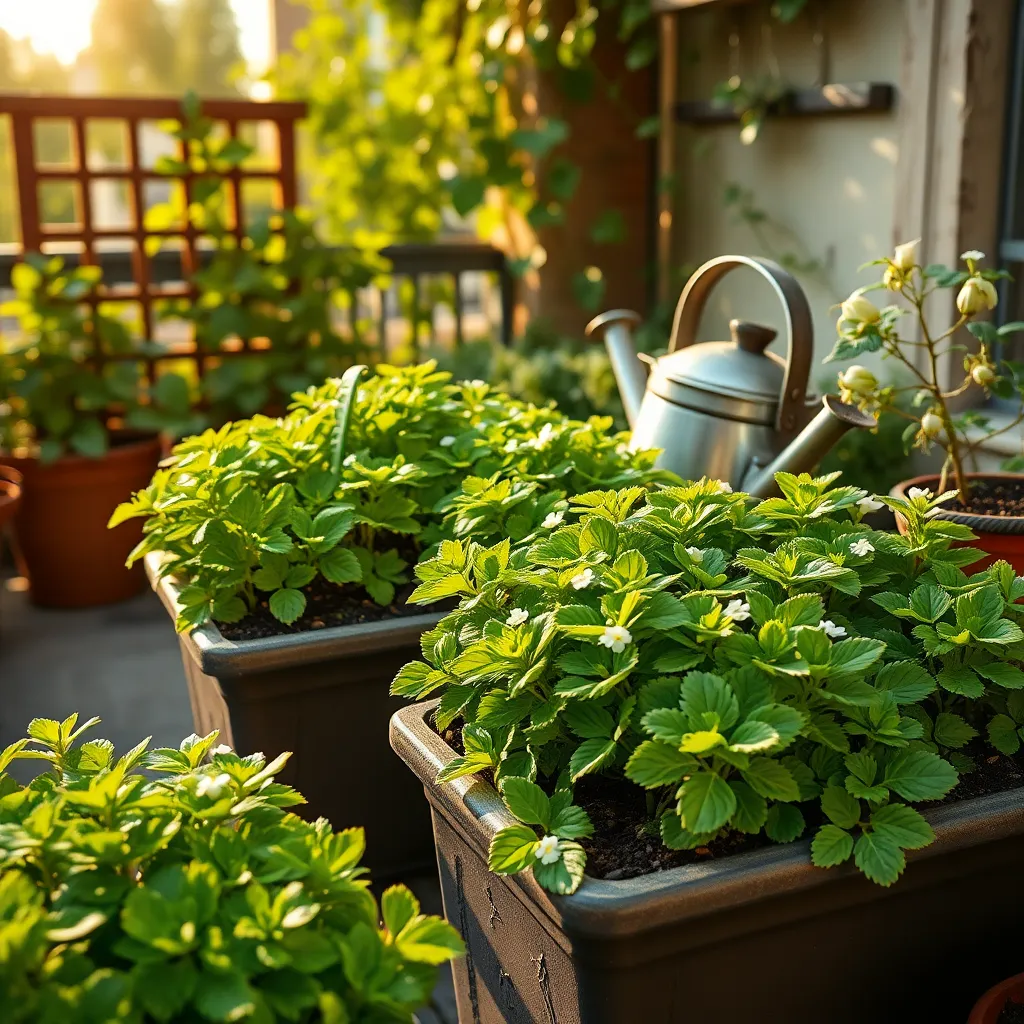
Choosing the right potato variety is crucial when space is limited. Compact potato varieties are perfect for small gardens or even containers, ensuring you can still enjoy a bountiful harvest.
For small spaces, consider planting varieties such as ‘Charlotte’ or ‘Maris Piper’. These types are known for their smaller growth habit while still offering excellent yields.
It’s important to use a quality potting mix that is rich in organic matter to support the growth of your potatoes. A mix of equal parts compost and garden soil will provide the necessary nutrients and drainage.
When growing potatoes in containers, ensure they are at least 12 inches deep to allow for root expansion. Water your potatoes consistently, making sure the soil remains moist but not waterlogged, as too much water can lead to rot.
To maximize space, try the ‘hilling’ technique by gradually adding soil or mulch around the stems as they grow. This encourages more tubers to develop underground, optimizing your small gardening area.
For advanced gardeners, consider experimenting with vertical gardening techniques like stacking old tires or using special potato grow bags. These methods allow you to grow more potatoes in a confined area by taking advantage of vertical space.
Prepare Containers with Drainage
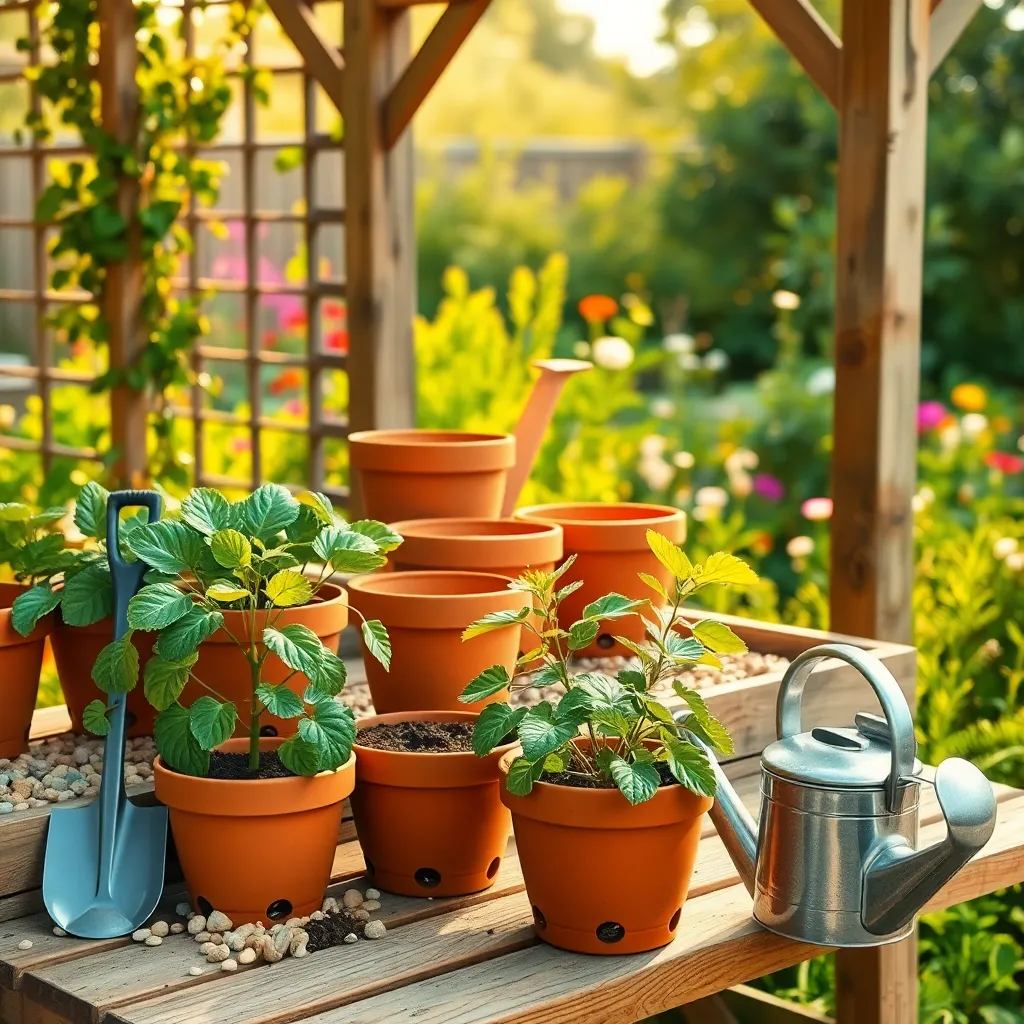
When growing potatoes in containers, ensuring proper drainage is crucial to prevent waterlogging, which can lead to root rot. Start by selecting containers with drainage holes at the bottom; if necessary, drill holes into your chosen pots to improve water escape.
Choose a container that is at least 12 inches deep and wide enough to accommodate the growth of compact potato varieties. A container this size will provide enough space for the tubers to develop while preventing overcrowding, which can hinder growth.
To further enhance drainage, place a layer of gravel or small stones at the bottom of your container before adding soil. This layer will help excess water escape more efficiently, keeping the roots healthier.
Fill the container with a quality potting mix that has been amended with compost to enrich it with nutrients. A well-draining soil mix is ideal, as it allows for adequate air circulation around the roots, promoting strong plant growth.
For those seeking advanced techniques, consider adding a small amount of sand to the soil mix to improve drainage further. This is especially helpful in regions with high rainfall, ensuring that the soil does not become compacted and remains aerated.
Fill with Quality Potting Mix
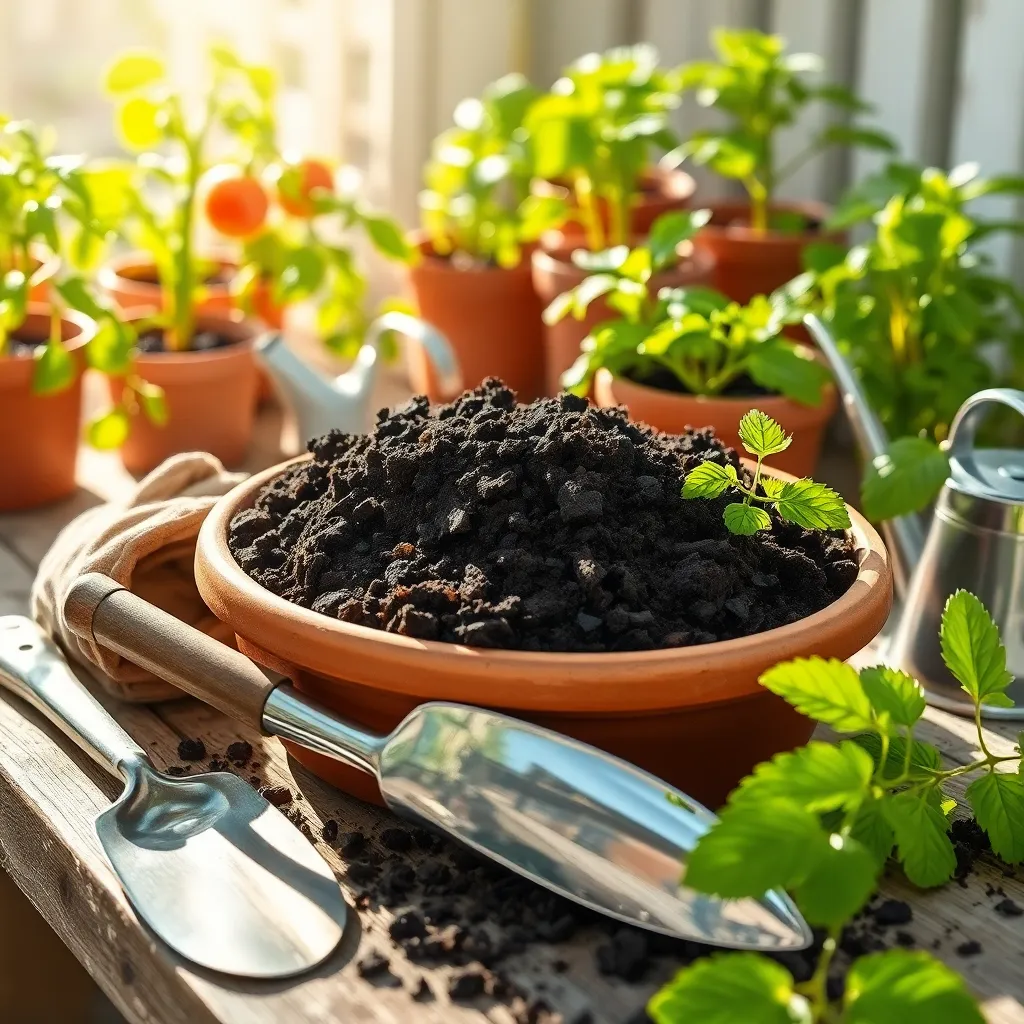
To give your potatoes the best start, fill your containers with a quality potting mix designed for vegetables. This type of mix is specifically formulated to provide the necessary nutrients and drainage potatoes need to thrive.
Look for a potting mix that contains a blend of peat moss, compost, and perlite, which will ensure good aeration and moisture retention. These ingredients help prevent waterlogging, which can lead to root rot and other issues.
For an added boost, mix in a slow-release fertilizer that is high in potassium and phosphorus, which supports tuber development. This will provide a steady supply of nutrients as your potatoes grow, reducing the need for frequent fertilization.
Advanced gardeners might consider adding a handful of bone meal or rock phosphate to the mix. These amendments can enhance the nutrient profile of your potting mix, supporting stronger root growth and healthier plants.
Plant Seed Potatoes Correctly
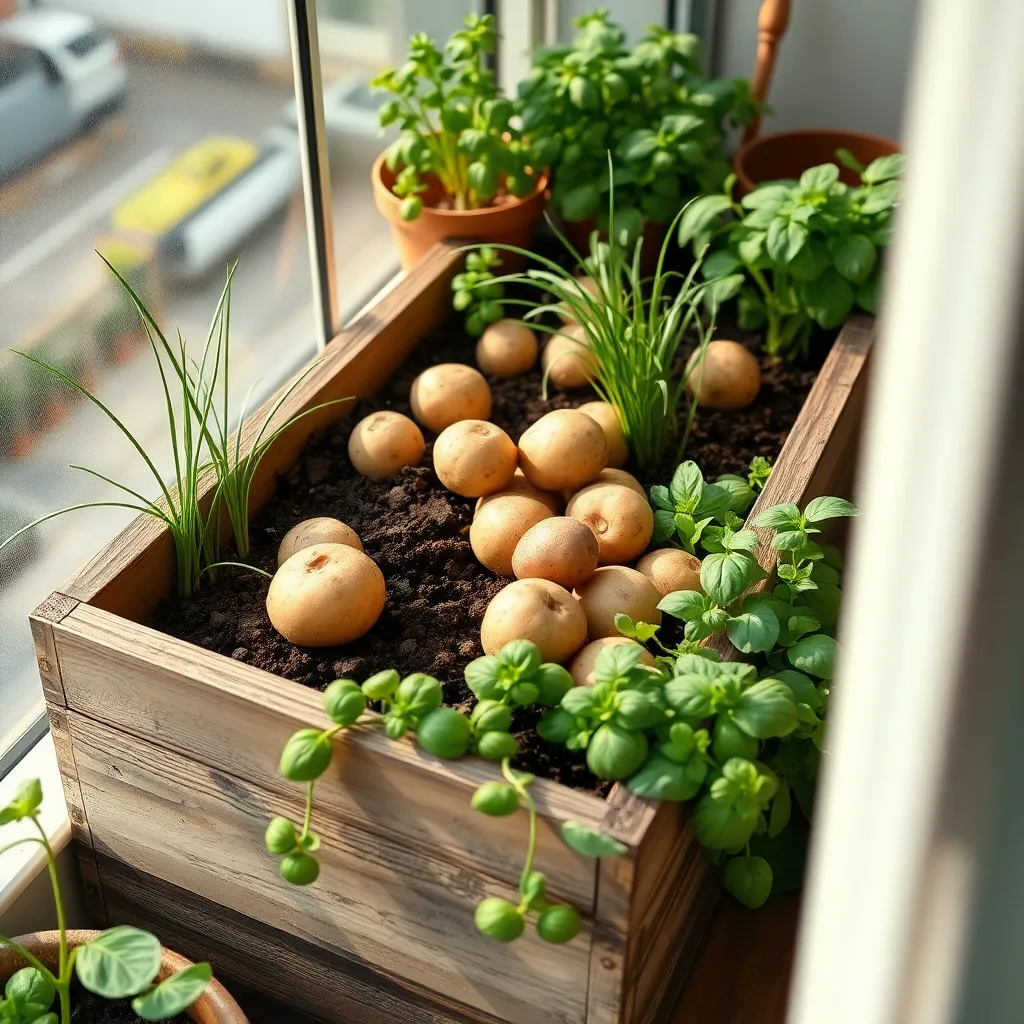
To plant seed potatoes correctly, start by cutting larger seed potatoes into pieces, ensuring each piece contains at least one or two eyes. Allow the cut pieces to dry for a day or two before planting to form a protective callous, which helps prevent rot.
Next, fill your chosen container with about four inches of quality potting mix, leaving ample room for the seed potatoes to grow. Place the seed potato pieces on the soil surface, with the eyes facing upward to ensure proper sprouting.
Space each piece about 10 to 12 inches apart for optimal growth, especially if you’re using a larger container. After placing the seed pieces, cover them with an additional two to four inches of soil, which helps retain moisture and provides room for root development.
Water the soil thoroughly but avoid waterlogging, as potatoes prefer moist yet well-draining conditions. As the plants grow, continue to add soil to keep the tubers covered, a process known as “hilling,” which encourages more potato growth.
For gardeners looking to optimize yield, consider using a straw mulch on top of the soil to help retain moisture and keep the growing area cool. This technique can also reduce the need for frequent watering, making it an efficient choice for busy gardeners.
Water and Monitor Growth Regularly
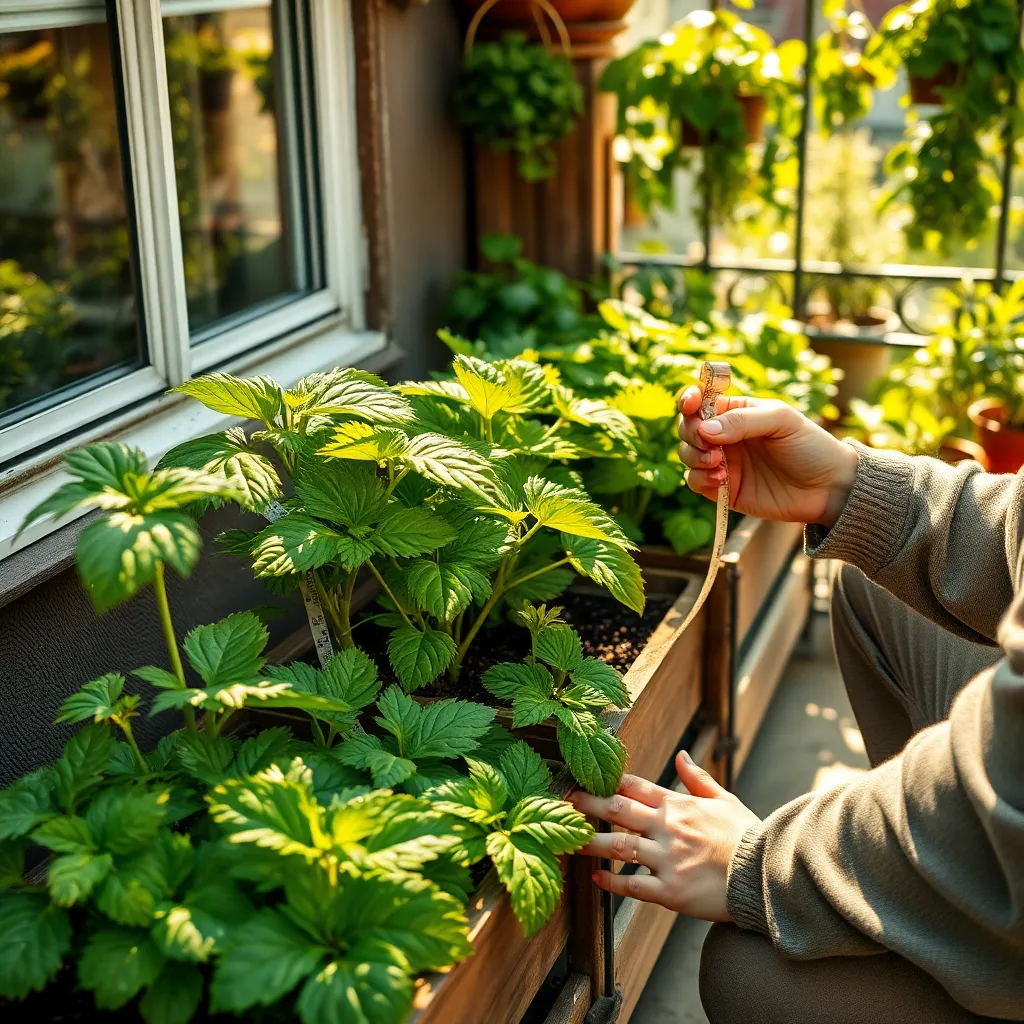
Consistent monitoring and watering are essential for growing healthy potatoes in small spaces. Regularly check the soil moisture by inserting your finger about an inch deep; if it feels dry, it’s time to water.
Potatoes require moist, but not waterlogged, soil to thrive. Water deeply once or twice a week, depending on the weather and container size, to ensure roots receive adequate moisture.
It’s important to maintain a balanced watering routine, especially during the tuber formation stage. Overwatering can lead to rot, while underwatering can stunt growth, so finding that balance is key.
In addition to watering, keeping an eye on the growth progress will help you catch any issues early. Look for signs of pests or diseases such as discolored leaves or holes, and address them promptly with organic solutions.
Conclusion: Growing Success with These Plants
In nurturing potatoes within confined spaces, we’ve unearthed five key relationship insights: the importance of cultivating a nurturing environment, the value of patience in growth, the necessity of consistent care, the power of adaptability to overcome challenges, and the significance of shared experiences in fostering connection. Each of these principles not only applies to gardening but also mirrors the essential elements of thriving relationships.
As an immediate next step, consider identifying one small way you can nurture your relationships today, whether it’s through a heartfelt conversation, an unexpected gesture of kindness, or simply setting aside time to truly listen. These small, intentional actions can make a profound impact over time.
To ensure these valuable insights remain at your fingertips, be sure to save or bookmark this article for future reference. By doing so, you’ll have a handy reminder of how small, consistent efforts can lead to blossoming relationships.
As you move forward, remember that every relationship has the potential to flourish when tended with care and intention. Embrace these principles, and watch as your connections grow stronger and more resilient with each passing day.

